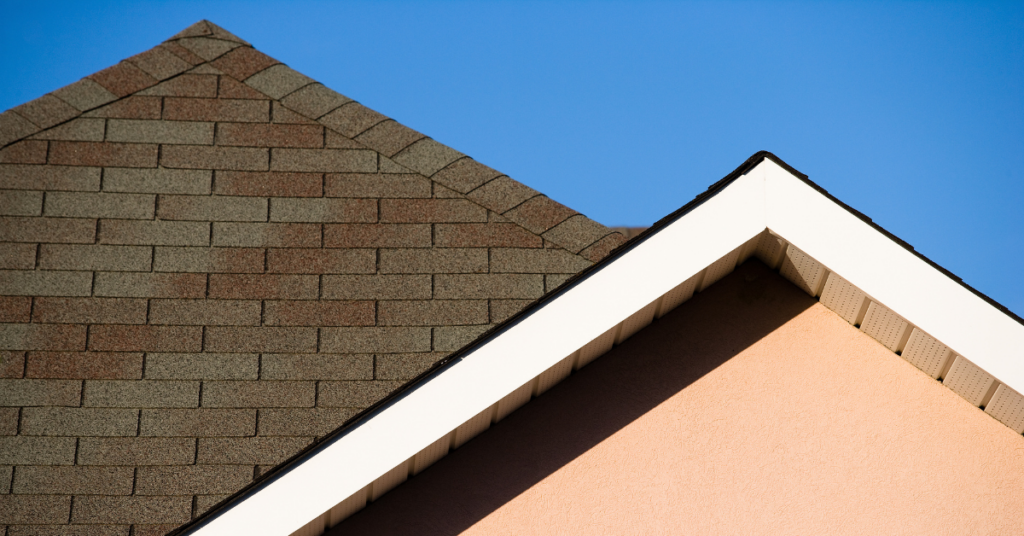
Water drainage is critical to the health of any roof. When rainwater doesn’t drain properly, it can lead to pooling, leaks, and structural damage. Here’s how roof pitch impacts drainage:
- Steep-Pitched Roofs:
Steep roofs allow rainwater and debris to flow off quickly and efficiently. This reduces the risk of water pooling, mold growth, and leaks. Steep-pitched roofs are ideal for areas like the Willamette Valley, where heavy rain is common. - Low-Slope and Flat Roofs:
These roofs don’t drain water as efficiently as steep roofs. Instead, water may linger or “pool,” which increases the risk of leaks and water damage over time. To compensate, flat roofs often require specialized drainage systems like gutters, drains, or coatings to protect the structure.
Why Water Drainage Matters
When water accumulates on your roof, it increases stress on the materials, weakens the structure, and shortens the roof’s lifespan. Choosing the right pitch ensures water flows off safely and prevents costly damage down the road.
Roof Pitch and Material Longevity
The slope of your roof also determines which roofing materials work best and how long they’ll last. Let’s take a look:
Steep-Pitched Roofs
- Materials: Asphalt shingles, metal roofing, slate, and clay tiles.
- Why It Works: Steep slopes promote excellent water runoff, so materials stay drier and last longer. For example, asphalt shingles on a steep roof can easily last 20-30 years when well-maintained.
- Durability: Because water drains quickly, steep roofs experience less wear and tear over time, increasing material longevity.
Flat or Low-Slope Roofs
- Materials: Membrane systems like EPDM rubber, modified bitumen, or TPO (thermoplastic polyolefin). These materials are waterproof and designed to handle pooling water.
- Challenges: Since drainage is slower, flat roofs require regular inspections and maintenance to ensure no water damage occurs.
Key Takeaway: Matching the right roofing material to your roof pitch is essential. For steep roofs, choose materials that benefit from quick drainage. For flat roofs, use materials designed to handle standing water.
Choosing the Right Roof Pitch for Your Property
If you’re wondering what roof pitch is best for your home or business, here are some factors to consider:
- Climate: In rainy regions like the Willamette Valley, a steeper roof pitch is usually recommended to ensure proper drainage and avoid water damage.
- Building Type:
- Residential homes often benefit from steep-pitched roofs for their aesthetic appeal and durability.
- Commercial buildings frequently use low-slope or flat roofs because they’re more cost-effective and provide space for HVAC units or solar panels.
- Budget: Steep roofs cost more to install due to extra materials and labor, but they tend to require less maintenance over time.
- Maintenance: If regular maintenance is a challenge, a steep roof might be the better option, as it naturally sheds water and debris.
Consulting with professional roofing contractors like Stutzman & Kropf can help you determine the right pitch based on your specific needs.
Common Roof Pitch Problems and How to Avoid Them
No matter your roof pitch, problems can arise if the roof isn’t installed or maintained properly. Here are some common issues and solutions:
Protect Your Home with the Perfect Roof Pitch
Your roof’s pitch has a bigger impact than you might think. It influences how well your roof drains water, the types of materials you can use, and how long those materials will last.
For property owners in the Willamette Valley, where rain is a regular guest, choosing the right roof pitch can prevent costly water damage and ensure a longer-lasting roof. Whether you’re building new or replacing an existing roof, professional guidance can make all the difference.
At Stutzman & Kropf, we’ve been helping homeowners and businesses in Albany, Corvallis, Salem, and beyond make the best roofing choices for decades. Contact us today to learn how we can help you find the perfect roofing solution for your property!
